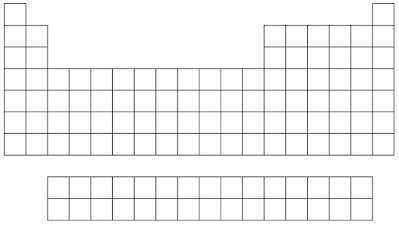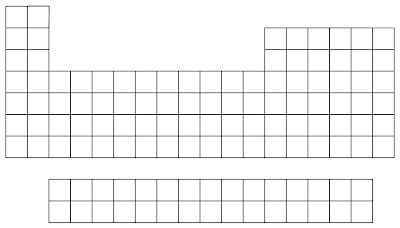To use the periodic table for electron configuration we need to make a small adjustment and then to break it into four separate pieces.
Let’s start with the rearrangement. The periodic table we are all familiar with looks like this:
- Start at the top left
- Read to the right until you get to the end of the line
- When you reach the end of the line, go back to the left, one row down
- Stop when you reach the element that you area looking for
Helium
Again, we start at the top left (row 1, s block) and count over to helium (2nd element). That gives us 1s2.
Lithium
Starting at the top left we count over two elements in the first row (1s2). Having finished that row, we go back to the left but down one row. We are now on row 2, but still going into the s block (2s). Lithium is the first element in that row - 2s1. All together, that gives us 1s2 2s1.
Fluorine
Again starting at the top left, we need to go through the first row (1s2) and then move to the second row, where counting 2 elements finishes the s block (2s2). But the 2nd row is not yet finished. That means that we stay on the 2nd row, but move into the p block, counting our way over to fluorine - the 5th element in the block (2p5). Putting it all together gives the electron configuration 1s2 2s2 2p5.
Chlorine
To reach the element chlorine we need to “read” through the first row (1s2), through the entire second row (2s2 2p6) and then through the s block on the third row (3s2) and across most of the p block (3p5). That gives an electron configuration of 1s2 2s2 2p6 3s2 3p5.
It is worth noting that both fluorine and chlorine end in p5. As a result they share many chemical properties. In fact, all of the elements in that column of the table end with p5 and share chemical properties.
We're not done yet
Chemists, always looking for a more efficient (lazy) way to do things, use a shortcut. In addition there are, of course, some quirks about the periodic table and electron configuration that we need to address.
Lastly, we need to think about how ions are formed - both negative ions and positive ions.






No comments:
Post a Comment